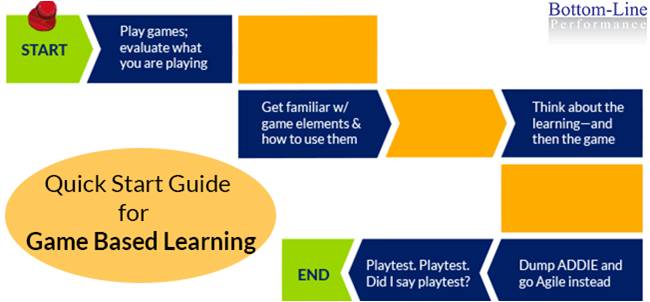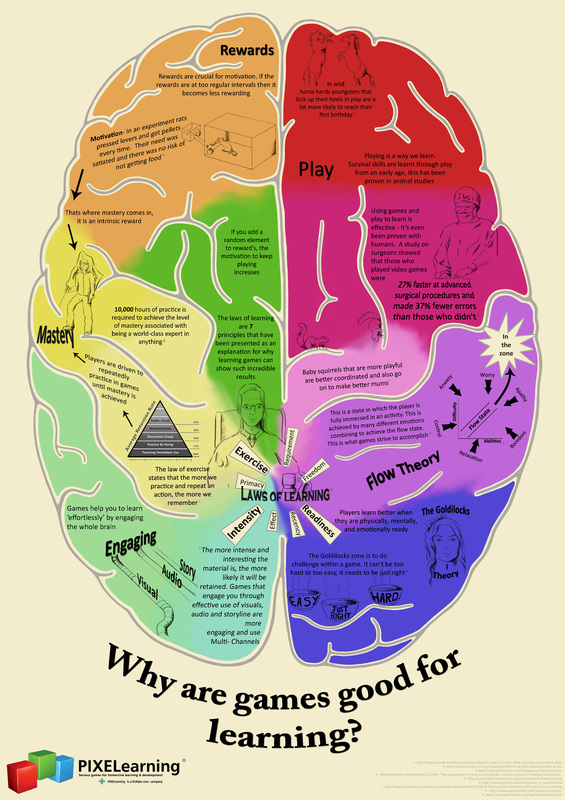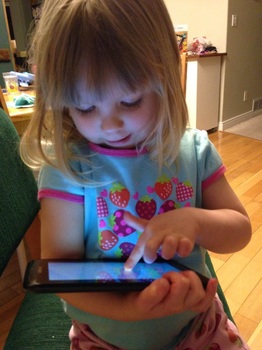If we are able to teach and inform teachers and parents about the benefits of games in education, we can create courses that not only hit all the learning outcomes but also engage our students in a way that the learning that is happening is not only desired by the students because it is something they find fun, but it is also deep learning.
When I first tried a game for an educational purpose, I searched for learning games and one that I came across was knowledge guru. This game was not one that I would necessarily use with my students (unless I was doing a nutrition assignment for something) but it helped me to learn what a great learning game looked like. This game sent you on quests, which you completed by answering questions, and when you got a question wrong, it explained the correct answer so you could get it right the next time. Like I said, not something I would necessarily use with my students but I am glad that I played it because I would not have thought to look for question games that explained the right answer without playing this one. I also checked out their website and they had a great Quick Start Guide for Game Based Learning infographic that I think all teachers should follow when starting to implement a game. What I thought stood out the most from this was every step seemed to make a statement (either obviously or not so obviously) about getting familiar with the game before bringing it to your students which is huge. If you bring a game to your students that you have never tried before and expect it to hit learning outcomes based on something someone else said and haven’t tried it yourself, what help are you going to be to your students and how will you be able to justify it to the parents of those students?
When I first tried a game for an educational purpose, I searched for learning games and one that I came across was knowledge guru. This game was not one that I would necessarily use with my students (unless I was doing a nutrition assignment for something) but it helped me to learn what a great learning game looked like. This game sent you on quests, which you completed by answering questions, and when you got a question wrong, it explained the correct answer so you could get it right the next time. Like I said, not something I would necessarily use with my students but I am glad that I played it because I would not have thought to look for question games that explained the right answer without playing this one. I also checked out their website and they had a great Quick Start Guide for Game Based Learning infographic that I think all teachers should follow when starting to implement a game. What I thought stood out the most from this was every step seemed to make a statement (either obviously or not so obviously) about getting familiar with the game before bringing it to your students which is huge. If you bring a game to your students that you have never tried before and expect it to hit learning outcomes based on something someone else said and haven’t tried it yourself, what help are you going to be to your students and how will you be able to justify it to the parents of those students?
Obviously some games will appeal to some students where as others will not care for the same game. I can think of a former student of mine who plays Minecraft a lot and really enjoys it – I even went to visit him and his family and he taught me how to play Minecraft so I could have a basic understanding for this course. After playing Minecraft for a while, I can see how some people would like the open-endedness of it but I like the games where there is a goal and when I obtain the goal I move on to the next level until all the goals have been completed and I beat the game. Knowing this about myself is something that has to be thought about with our students. Some with take huge pride in their creations and exploration games with no firm tasks while others will need to have clear tasks set out by the teacher as that is what appeals to them. The nice thing that I have learned about Minecraft is that all of the steps are logical – you need a pick-axe to mine coal among other things, you can build a furnace and create glass from sand, along with many other things – having a teacher ask a student to complete a task can also be set up so that a trail of logic is formed. I can think of having students learn how glass is formed by playing a video game (much more interesting then reading a worksheet) and then having a discussion after about how the process works.
Justin Marquis suggests that there are 3 Strategies that you can use to make Game-Based Learning Explicit:
So why are games so great for learning? Just check out this infographic below
Justin Marquis suggests that there are 3 Strategies that you can use to make Game-Based Learning Explicit:
- Encourage cooperative play
- Implement structures for active engagement
- Embrace failure as a learning opportunity
So why are games so great for learning? Just check out this infographic below
My top 3: (Three things that should be considered when using games in the classroom)
Resources:
Boller, S (June 8, 2013) Quick Start Guide for Game Based Learning Design. Retrieved on March 29, 2014 from http://www.bottomlineperformance.com/quick-start-guide-for-game-based-learning-free-webinar/
Helen (August 14, 2012) Why are games good for learning? Retrieved on March 29, 2014 from http://pixelearning.wordpress.com/2012/08/14/why-are-games-good-for-learning/
Huhn, J (May 15, 2013) Getting the Facts on Game Based Learning (INFOGRPAHIC). Retrieved on March 29, 2014 from http://www.theknowledgeguru.com/game-based-learning-infographic/
Marquis, J Ph.D. (November 25, 2013) How To Help Your Students Embrace Failure Through Game-Based Learning. Retrieved on March 29, 2014 from http://www.teachthought.com/technology/help-students-embrace-failure-game-based-learning/
- Do you understand the game and how it works – if you as the teacher do not understand the ins and outs of the game, how will you be able to support your students?
- Is it engaging for your students – do they enjoy playing the game or are they just playing it because it is a requirement that you have set for them? If you want to see the difference when using games that are engaging to your students with their learning just look at the infographic found here: http://www.theknowledgeguru.com/game-based-learning-infographic/
- Can it be modified? – Like Minecraft, different options are available and different objectives can be given, choosing games with different ways of approaching it or different difficulty levels can make a huge impact for more students.
Resources:
Boller, S (June 8, 2013) Quick Start Guide for Game Based Learning Design. Retrieved on March 29, 2014 from http://www.bottomlineperformance.com/quick-start-guide-for-game-based-learning-free-webinar/
Helen (August 14, 2012) Why are games good for learning? Retrieved on March 29, 2014 from http://pixelearning.wordpress.com/2012/08/14/why-are-games-good-for-learning/
Huhn, J (May 15, 2013) Getting the Facts on Game Based Learning (INFOGRPAHIC). Retrieved on March 29, 2014 from http://www.theknowledgeguru.com/game-based-learning-infographic/
Marquis, J Ph.D. (November 25, 2013) How To Help Your Students Embrace Failure Through Game-Based Learning. Retrieved on March 29, 2014 from http://www.teachthought.com/technology/help-students-embrace-failure-game-based-learning/



 RSS Feed
RSS Feed
